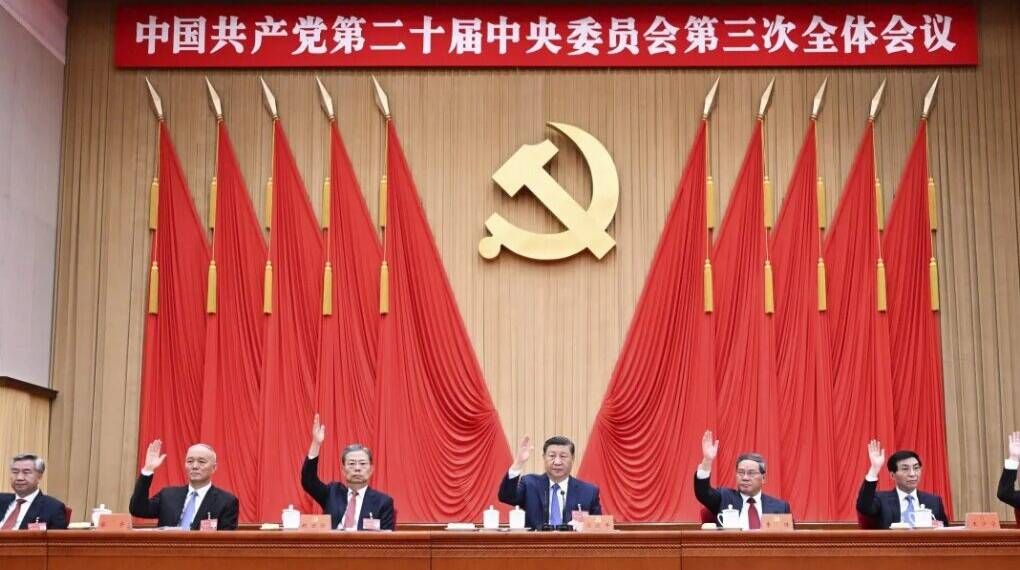China’s ruling Communist Party is set to convene its pivotal annual plenary session in Beijing this October, primarily focused on formulating the 15th Five-Year Plan (2026–2030), charting the country’s economic, political, and social trajectory amidst persistent tensions with the United States. This gathering, involving over 370 Central Committee members, comes at a critical juncture for China as it navigates intensifying geopolitical rivalries, domestic reforms, and an evolving global order.
Domestic Priorities Amid External Challenges
The forthcoming plenary session follows comprehensive internal consultations including a public online review initiated in May, and will finalize a blueprint for China’s strategic direction over the next half-decade. The five-year plan traditionally serves as the government’s roadmap for growth targets, industrial priorities, technological advancement, social policy, and governance reforms.
Xi Jinping’s leadership has underscored the urgency of sustaining economic resilience in the face of mounting external pressures, particularly the protracted trade and technology rivalry with the United States. Despite episodic negotiations halting an escalated trade war, deep-seated rivalry across sectors such as semiconductors, clean energy, and digital infrastructure persists and is expected to shape China’s policy prescriptions. This plan will likely prioritize self-reliance in critical technologies, upgrading manufacturing capabilities, and advancing social stability to shield the nation from external shocks.
Global Implications
China’s October plenum unfolds ahead of the Asia-Pacific Economic Cooperation (APEC) summit in Seoul, a potential stage for high-stakes dialogue between Xi Jinping and U.S. President Donald Trump. How China shapes its five-year plan amid this backdrop will signal its strategic posture toward global cooperation versus competition.
The plan’s emphasis on technological autonomy and economic security can be seen as a direct response to U.S. policies designed to contain China’s rise. This implies a continuation, if not escalation, of strategic competition that will ripple across global supply chains, international trade regimes, and diplomatic alliances. Countries dependent on either the U.S. or Chinese economies may find themselves navigating increasingly complex pressures as both powers sharpen their contest for influence.
At the same time, China’s participation alongside Russia and other significant powers in recent commemorations and the broader geopolitical theatre indicates its efforts to consolidate alternative strategic partnerships. The October plenary could set the tone for China’s alignment strategies, pushing further for multilateralism under its terms or deepening selective blocs in opposition to Western-led initiatives.
Political Realignments Within the Party
This plenum will also witness critical reshuffles within the Central Committee, the highest governing body of the Communist Party. At least five members, including several under corruption investigations and those who have fallen ill or died, will be replaced. The removal of key figures such as Jin Zhuanglong (former Ministry of Industry chief) and the investigations implicating senior officials point to ongoing internal power consolidations under Xi’s leadership.
Such personnel changes are significant as they may reflect strategic attempts to tighten control over economic and military levers crucial for China’s ambitions in the next five years. The military leadership’s stability, underscored by roles like General He Weidong’s, also remains crucial as China balances its regional assertiveness and military modernization.
Strategic Blueprint Amid Global Crossroads
China’s 15th Five-Year Plan deliberations come at a crossroads for the global order. Facing persistent challenges from the U.S. and broader geopolitical uncertainty, Beijing’s decisions in October will provide a window into the country’s long-term priorities for economic resilience, technological independence, social governance, and international diplomacy.
The outcomes will likely reverberate far beyond China’s borders, influencing global trade patterns, technological competition, and the strategic calculations of rival powers. As the world watches Xi Jinping’s China maneuver its path forward, the plenum embodies not just an internal governance exercise but a moment of profound geopolitical significance with implications for global stability and economic architecture well into the next decade.








